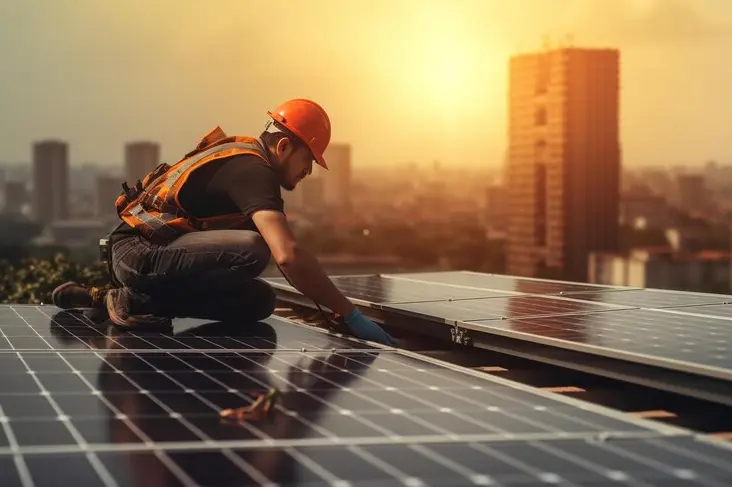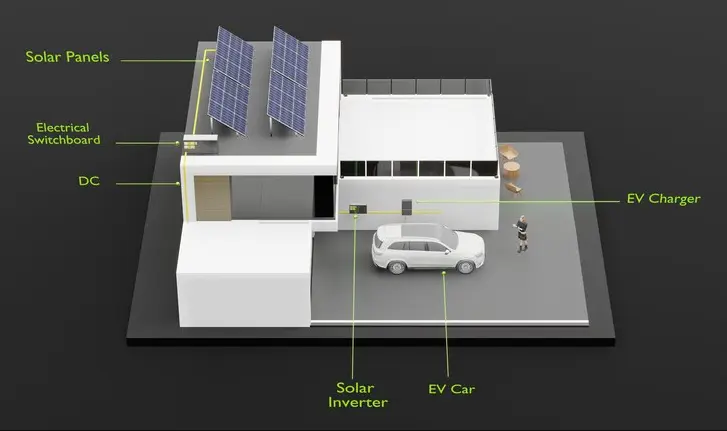
How much power does a 6.6kW solar system produce per day in Sydney?
Solar energy has gained immense popularity as a sustainable and cost-effective source of power in recent years. With increasing concerns about climate change and the rising costs of traditional energy sources, many homeowners are turning to solar power to meet their energy needs. One common question that arises when considering solar energy is: How much power does a 6.6kW solar system produce per day in Sydney? Let’s delve into this question and explore the factors that influence solar energy production in the vibrant city of Sydney.

Understanding 6.6kW Solar System Capacity
Before we dive into the specifics of power production, it’s essential to grasp the concept of a 6.6 kW solar system. The “kW” in the system’s name stands for kilowatt, which is a unit of power. A 6.6kW solar system, therefore, has a capacity to produce 6.6 kilowatts of power under ideal conditions. However, actual power output can vary due to factors such as weather conditions, panel efficiency, shading, and system maintenance.
Solar Energy Production Factors in Sydney
Sydney, Australia’s largest city, enjoys a sunny climate for most of the year, making it an excellent location for harnessing solar energy. The amount of power a 6.6kW solar system produce per day in Sydney depends on several key factors:
1. Sunlight Availability:
Sydney’s abundant sunlight is a boon for solar energy production. On average, the city receives about 4-5 hours of peak sunlight per day. However, this can vary depending on the season and weather conditions.
2. Panel Efficiency:
The efficiency of the solar panels directly impacts energy production. High-quality panels with greater efficiency can convert more sunlight into electricity, increasing daily power output.
3. Tilt and Orientation:
The angle and orientation of the solar panels affect their exposure to sunlight. Proper alignment towards the sun’s path maximizes energy absorption and production.
4. Shading:
Shading from nearby buildings, trees, or other obstructions can significantly reduce energy production. It’s crucial to install solar panels in a location with minimal shading.
5. Temperature:
While Sydney’s climate is generally favorable for solar energy, high temperatures can slightly reduce panel efficiency. Modern solar panels are designed to handle temperature variations effectively.
Calculating Daily Power Production
To estimate the daily power production of a 6.6kW solar system in Sydney, we can consider the average peak sunlight hours, which range from 4 to 5 hours. To calculate the daily energy output, multiply the system’s capacity (6.6 kW) by the average peak sunlight hours:
Average Peak Sunlight Hours = 4.5 hours (midpoint of 4 and 5)
Daily Power Production = 6.6kW × 4.5 hours = 29.7 kWh (kilowatt-hours) Therefore, a 6.6kW solar system in Sydney can produce approximately 29.7 kilowatt-hours of electricity per day under optimal conditions.
Request a quote
FAQ
-
What is the average daily energy production of a 6.6kW solar system in Sydney?
On average, a 6.6kW solar system in Sydney can produce approximately 24-30 kWh (kilowatt-hours) of electricity per day, depending on factors like weather, panel orientation, and shading.
-
How does the weather affect daily energy production?
Solar panel production can vary based on weather conditions. Sunny days yield the highest energy output, while cloudy or rainy days may result in reduced energy generation. Additionally, extreme temperatures can also affect efficiency.
-
What factors can impact daily energy production other than weather?
Other factors include the angle and orientation of your solar panels, shading from nearby structures or trees, the quality of your solar panels and inverters, and maintenance.
-
Can I generate more power during the summer months in Sydney?
Yes, solar systems typically generate more energy during the longer and sunnier days of summer. Expect higher daily production during this season.
-
What about power generation during winter or cloudy days?
Solar panels still produce electricity during winter and cloudy days, but at a reduced rate compared to sunny days. You may want to consider the size of your system to ensure it meets your energy needs year-round.
-
How long does it take to recoup the cost of a 6.6kW solar system in Sydney through energy savings?
The payback period depends on various factors such as your electricity usage, system cost, and available incentives. Typically, it can take anywhere from 3 to 10 years to recoup your investment.
-
Can I sell excess solar energy back to the grid in Sydney?
Yes, you can often sell excess energy back to the grid through a process called net metering or feed-in tariffs, depending on your utility provider and the regulations in your area.
-
Is it possible to achieve energy independence with a 6.6kW solar system in Sydney?
Achieving complete energy independence may require a larger system and energy storage solutions like batteries. However, a 6.6 kW solar system can significantly reduce your reliance on the grid.
-
How can I monitor the daily energy production of my solar system in Sydney?
Most solar systems come with monitoring software or apps that allow you to track your system’s performance. You can also consider installing a separate energy monitoring system for more detailed data.
Remember that the actual daily energy production of your 6.6kW solar system in Sydney may vary, so it’s essential to consult with a solar professional to get a more accurate estimate based on your specific circumstances.
Conclusion
Solar energy is a viable and environmentally friendly solution for meeting power needs, and a 6.6kW solar system in Sydney can produce around 29.7 kilowatt-hours of electricity per day. However, it’s essential to remember that actual power production can vary due to factors beyond our control. To get an accurate estimate tailored to your specific location and circumstances, it’s recommended to consult with a professional solar installer. Embracing solar power not only helps reduce energy bills but also contributes to a greener and more sustainable future for Sydney and the planet as a whole.
